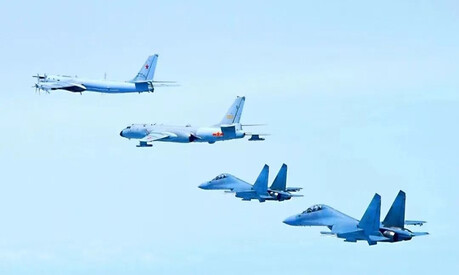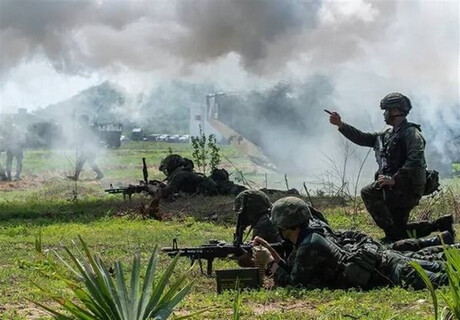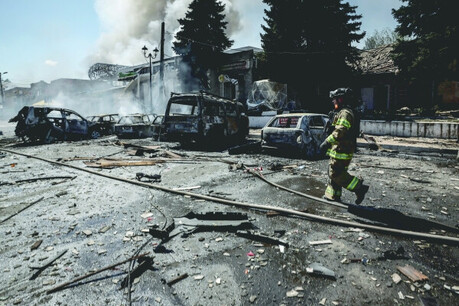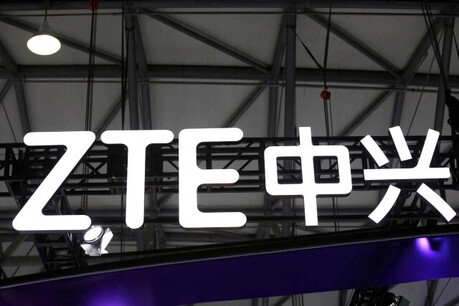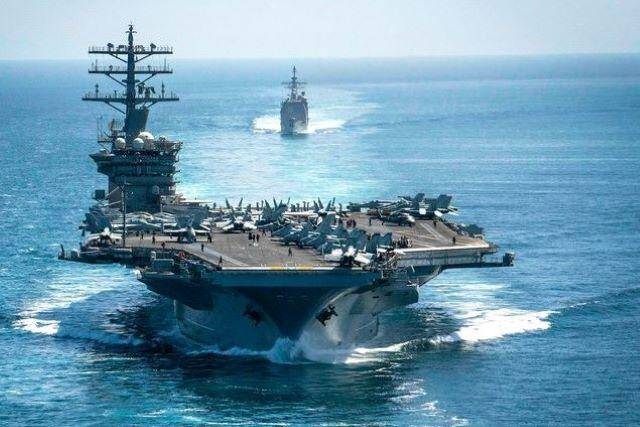
Manila, Philippines – A U.S. aircraft carrier strike group recently conducted maritime operations in the Philippine Sea, northeast of the Philippines, demonstrating its military presence in the region. This move comes just days after the Philippine Navy monitored Chinese vessels, including its own aircraft carrier, deployed in the Philippine Sea.
On Friday, the U.S. Navy stated that the Nimitz Carrier Strike Group (NIMCSG), centered around its flagship USS Nimitz (CVN 68), was deployed to the Philippine Sea after a port call in Guam. The U.S. Navy added that this power projection emphasizes the "U.S. commitment to a secure and prosperous Indo-Pacific region" and that it "maintains a combat-ready posture capable of projecting power throughout the region."
The Nimitz Strike Group reportedly conducted day and night flight operations in the Philippine Sea starting on the 23rd, focusing particularly on rapid launch and recovery drills under various scenarios. In addition to the 49-year-old USS Nimitz, which is scheduled to be decommissioned next year, destroyers from Destroyer Squadron (Desron) 9 and various squadrons and detachments under Carrier Air Wing (CVW) 17 were involved in the operation.
The Nimitz Carrier Strike Group operates under the U.S. Navy's 7th Fleet, known as the "largest forward-deployed fleet, regularly interacting and operating with allies and partners to preserve a free and open Indo-Pacific."
The U.S. Navy's announcement of this deployment in the Philippine Sea comes immediately after nine People's Liberation Army Navy (PLAN) vessels, including the aircraft carrier Liaoning, were spotted in the same waters earlier last week. This is interpreted as a mutual check and show of force by the navies of both countries in the strategically important Philippine Sea amid escalating tensions in the South China Sea.
Meanwhile, the U.S. Navy, along with the Philippine and Japanese Maritime Self-Defense Forces, began maritime exercises in the South China Sea on Thursday as part of this year's "Balikatan" joint exercises. The highlight of this six-day exercise will be a live-fire sinking exercise on May 5 targeting the BRP Miguel Malvar, a World War II-era patrol escort of the Philippine Navy that was decommissioned. This exercise will simulate an attack on a hypothetical enemy ship off the coast of San Antonio, Zambales.
In April of last year, the Philippine and U.S. forces also simulated an attack on an enemy vessel by sinking a Chinese-made Philippine Navy ship off the coast of Laoag City, Ilocos Norte.
According to Philippine Navy spokesperson and the last commanding officer of the Miguel Malvar, Commodore John Percie Alcos, the vessel was originally named USS Brattleboro and was commissioned in 1944, serving in the Vietnam War before being transferred to the Philippine Navy in 1976. Commodore Alcos emphasized that the Miguel Malvar was a Philippine Navy vessel that "still holds the most decorations," having conducted operations against Chinese incursions in the South China Sea in the past.
Meanwhile, a new FFG-06 class frigate (the new Miguel Malvar), built by Hyundai Heavy Industries of South Korea, arrived in the Philippines earlier this month and is scheduled to patrol the South China Sea after its commissioning in May. This 3,200-ton new vessel is equipped with anti-ship, anti-submarine, and anti-air capabilities, and is expected to contribute to strengthening the Philippine Navy's maritime operational capabilities.
The U.S. Navy's deployment of forces to the Philippine Sea, along with the ongoing Balikatan joint exercises, is interpreted as a demonstration of the joint commitment of the United States and the Philippines to respond to China's growing military influence in the South China Sea. In particular, using a decommissioned Philippine Navy vessel as a target for live-fire exercises is seen as an important opportunity to prepare for potential maritime conflict situations and strengthen the interoperability of the two countries' armed forces.
Experts analyze that this move by the United States is a direct countermeasure to China's aircraft carrier movements and an intention to strengthen security cooperation with regional allies and reaffirm U.S. military superiority. It is expected that the level of military tension between the U.S. and China will continue to remain high in the South China Sea and its adjacent waters.
[Copyright (c) Global Economic Times. All Rights Reserved.]

















